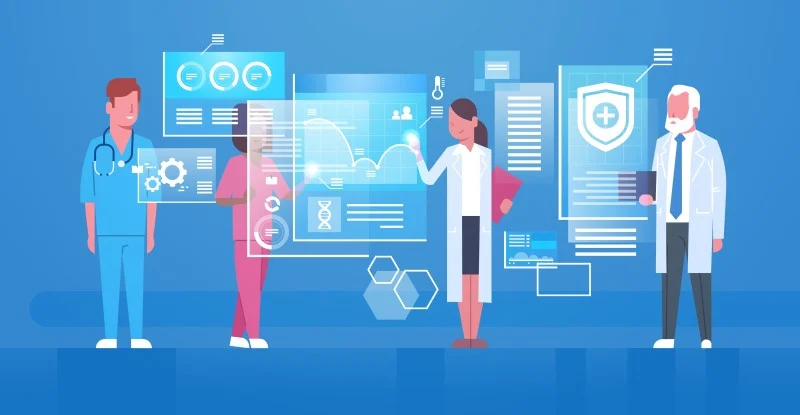How Telecommunications Technology Is Transforming Healthcare
- By -Mash
- Posted on
- Posted in Telecommunications
Telecommunications technology is revolutionizing the healthcare industry by enhancing access to medical services, improving patient outcomes, and streamlining operations. From telemedicine to real-time data monitoring, telecommunications innovations are reshaping how healthcare is delivered and experienced. This article explores the key ways telecommunications technology is transforming healthcare and its implications for patients and providers.

Expanding Access to Care
Telemedicine and Remote Consultations: Telecommunications technology has made remote consultations and telemedicine possible, allowing patients to receive medical care from the comfort of their homes. Through video calls, patients can consult with healthcare providers, receive diagnoses, and discuss treatment plans without needing to visit a clinic or hospital. This accessibility is particularly beneficial for those in rural or underserved areas where medical facilities may be limited.
Access to Specialist Care: Telemedicine bridges the gap between patients and specialists by enabling virtual consultations. Patients can connect with leading experts from around the world without geographical constraints, ensuring they receive high-quality care and second opinions even if local specialists are not available.
Managing Chronic Conditions: Remote monitoring technologies allow patients with chronic conditions to track their health metrics and share data with their healthcare providers in real time. This continuous monitoring enables timely interventions and adjustments to treatment plans, improving disease management and reducing hospitalizations.
Enhancing Patient Care and Engagement
Real-Time Health Monitoring: Telecommunications technology supports the use of wearable devices and mobile health applications that continuously monitor vital signs and health metrics. Devices such as smartwatches, glucose monitors, and blood pressure cuffs provide real-time data, allowing for proactive management of health conditions and early detection of potential issues.
Patient Portals and Health Records: Digital health records and patient portals facilitate seamless access to medical information. Patients can review their health records, test results, and treatment plans online, empowering them to take an active role in their healthcare and improving communication with their healthcare providers.
Educational Resources and Support: Telecommunication tools offer educational resources and support through online platforms, webinars, and virtual support groups. Patients can access information on managing their health conditions, participate in health education programs, and connect with support communities, enhancing their overall care experience.
Streamlining Healthcare Operations
Telehealth Platforms for Efficient Services: Healthcare providers use telehealth platforms to streamline service delivery, manage appointments, and facilitate virtual consultations. These platforms improve operational efficiency by reducing the need for in-person visits, minimizing administrative tasks, and optimizing scheduling.
Improving Emergency Response: Telecommunications technology enhances emergency response through real-time communication and data sharing. Emergency medical services (EMS) can transmit patient information and vital signs to receiving hospitals en route, allowing for better preparedness and coordination upon arrival.
Integrating Health Systems: Interoperable health information systems enable seamless data exchange between different healthcare providers and institutions. Telecommunications technology facilitates the integration of electronic health records (EHRs) and other health data systems, ensuring continuity of care and reducing redundancies.
Advancing Medical Research and Innovation
Collaborative Research: Telecommunications technology supports collaboration among researchers and institutions by providing tools for virtual meetings, data sharing, and joint studies. This collaboration accelerates medical research and the development of new treatments and therapies.
Data Collection and Analysis: Advanced data analytics and cloud computing enable the collection and analysis of large volumes of health data. Researchers can gain insights into disease patterns, treatment outcomes, and patient demographics, driving evidence-based practices and innovative solutions.
Remote Clinical Trials: Telecommunication tools facilitate remote participation in clinical trials, allowing patients to take part from their homes. This approach increases patient recruitment, diversity, and retention in clinical studies, contributing to more robust research outcomes.
Addressing Challenges and Considerations
Ensuring Data Security and Privacy: As healthcare data becomes increasingly digital, ensuring data security and privacy is paramount. Telecommunications technology must incorporate robust cybersecurity measures to protect sensitive health information and comply with regulations such as HIPAA (Health Insurance Portability and Accountability Act).
Overcoming Technology Barriers: Access to telecommunications technology and the internet can be a barrier for some patients, particularly in low-income or rural areas. Addressing these disparities is essential for ensuring equitable access to digital health services and technologies.
Maintaining Quality of Care: While telemedicine offers many benefits, maintaining the quality of care through virtual consultations requires careful consideration. Healthcare providers must ensure that remote consultations are as effective as in-person visits and that patients receive accurate diagnoses and appropriate treatments.
Conclusion
Telecommunications technology is transforming healthcare by expanding access to care, enhancing patient engagement, streamlining operations, and advancing medical research. The integration of telemedicine, real-time monitoring, and digital health tools is reshaping how healthcare is delivered and experienced, offering new opportunities for improving patient outcomes and operational efficiency. As technology continues to evolve, its impact on healthcare will likely deepen, driving further innovations and improvements in the industry.



